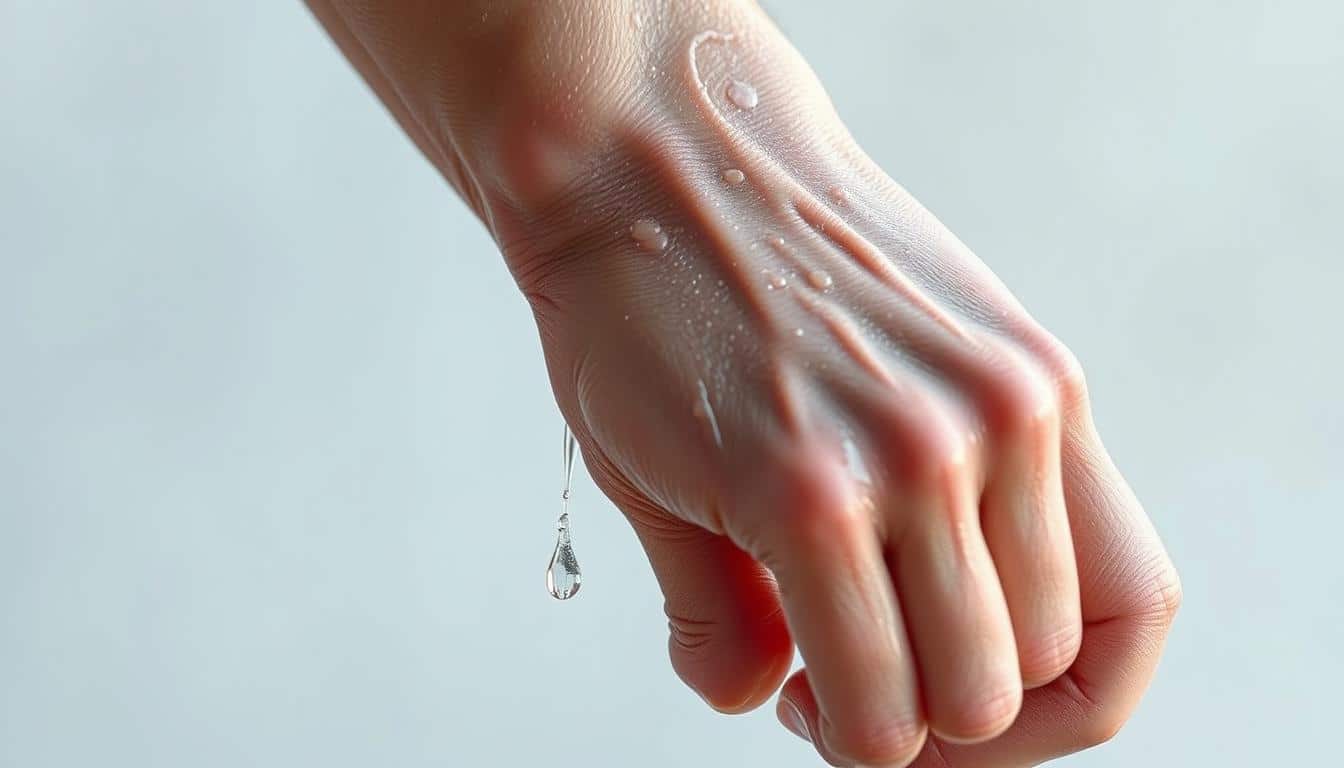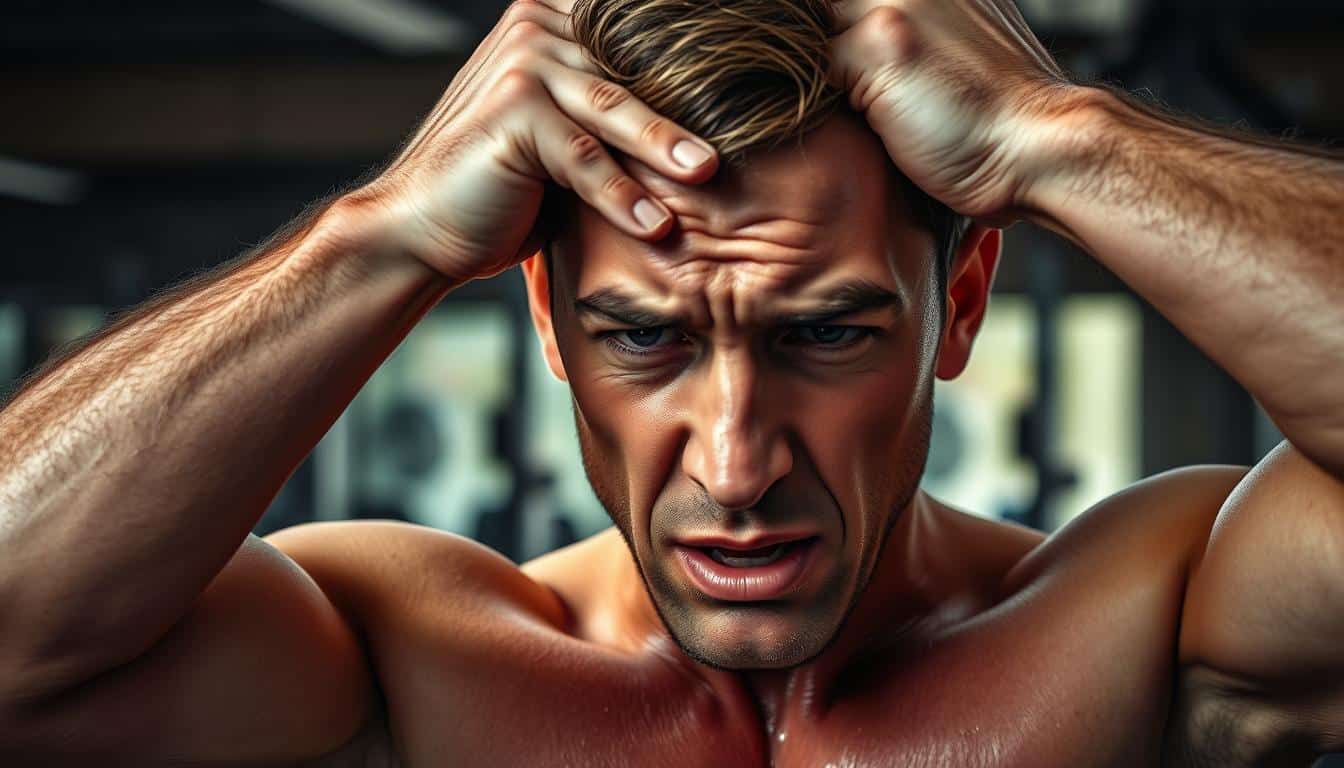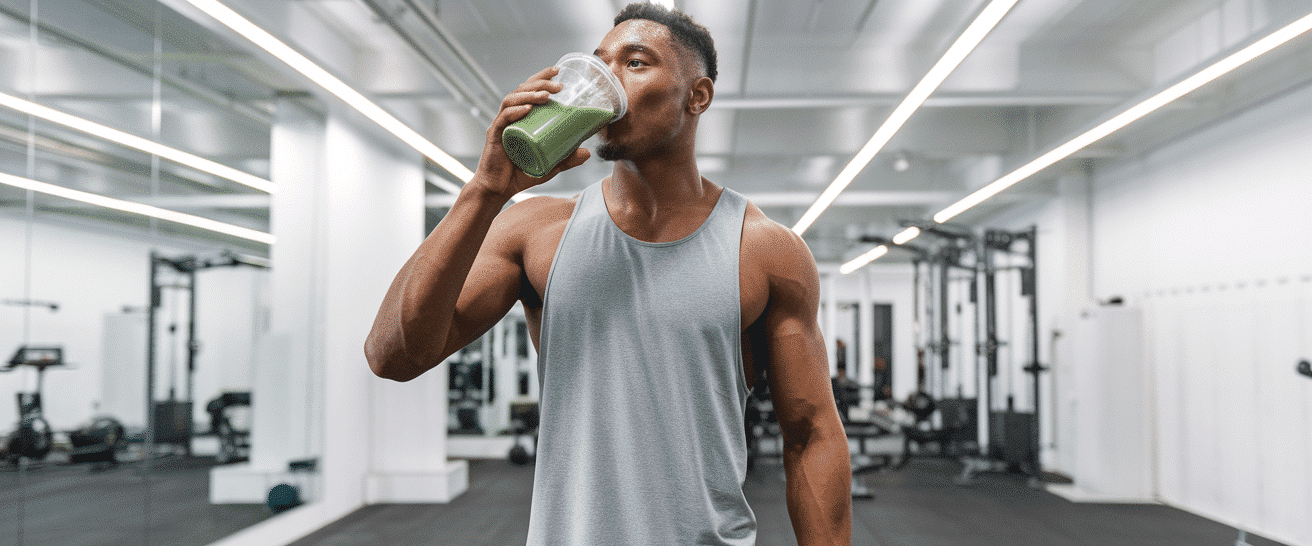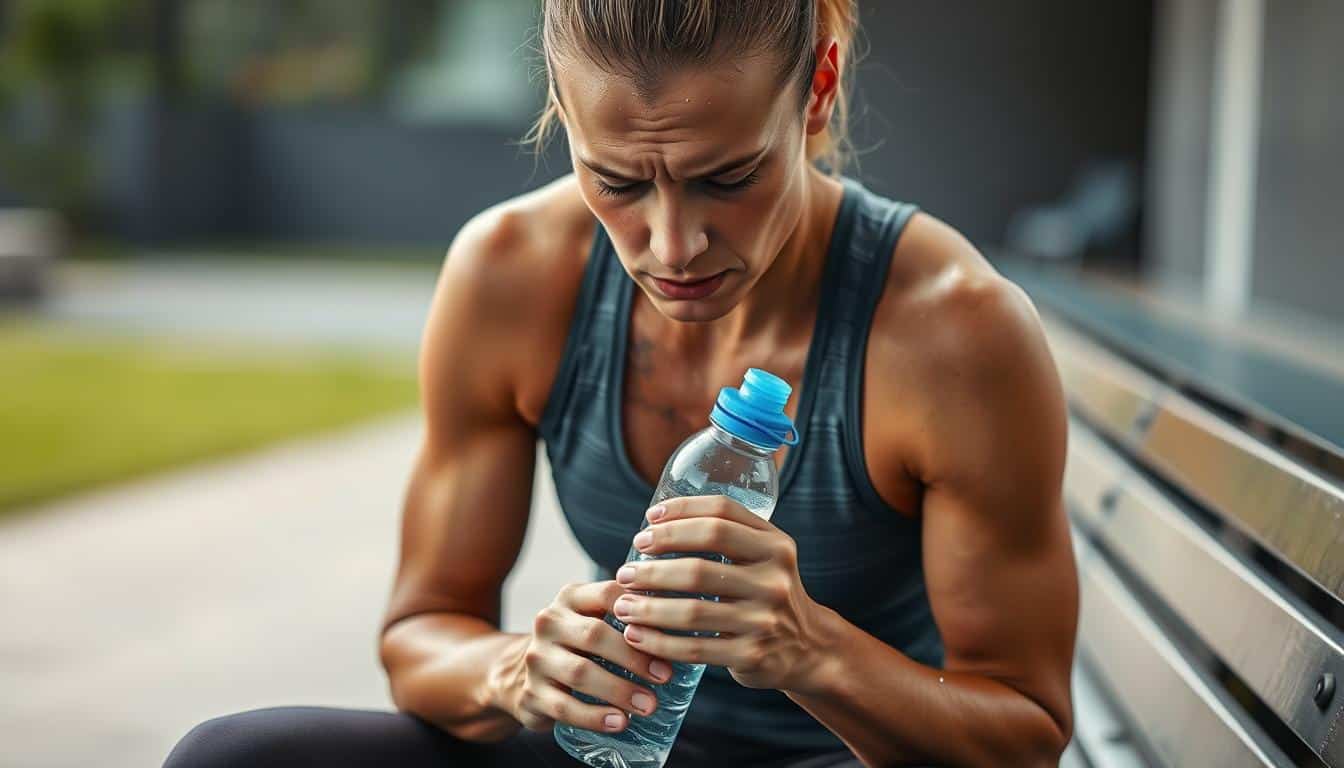Your body works like a high-performance engine during physical activity – and water is its essential fuel. Yet most athletes don’t realize they’re already playing catch-up before their first rep. Research shows three-quarters of active adults begin exercise with insufficient fluid levels.
Fluid loss accelerates rapidly when you’re moving. Every breath and bead of sweat chips away at your reserves. Unlike your phone’s battery indicator, your natural thirst signals arrive too late – like getting a “low fuel” warning when you’re already coasting on fumes.
Early warning signs often get mistaken for normal workout struggles. That heavy feeling in your limbs? Could be more than fatigue. A slight headache creeping in? Might not just be the heat. Learning to spot these red flags helps you stay ahead of the game.
Proper hydration isn’t just about avoiding problems – it’s your secret weapon for peak performance. When your cells have enough fluid, you maintain energy levels and focus better. We’ll show you how to recognize when your system needs replenishing, so you can train smarter and protect your health.
Overview of Dehydration and Exercise
Did you know losing just 2% of your body’s water can zap your energy and focus? That’s like trying to drive a car with low oil – things start grinding when resources run short. Staying properly hydrated isn’t just about quenching thirst; it’s about keeping your entire system running smoothly.

What Is Dehydration?
Your body constantly uses water for vital tasks like cushioning joints and delivering nutrients. Dehydration kicks in when you lose more fluids through sweat, breath, or bathroom breaks than you replace. Unlike hunger, your thirst mechanism often lags behind actual needs – especially when you’re active.
How Fluid Loss Affects the Body
Every drop of sweat cools your skin but also reduces blood volume. This makes your heart pump harder to move oxygen through thicker blood. Without enough fluids, your temperature regulation falters – like a car radiator low on coolant. Muscle cramps and dizziness often follow as cells struggle to function properly.
Smart hydration starts long before your workout. Track your water intake like you monitor your workout reps – both are essential for peak results. Remember, your body’s needs change with activity intensity, weather, and even the clothes you wear.
Recognizing dehydration symptoms during training
Thirst isn’t the first clue—it’s the last. Your body sends subtle distress signals long before you feel parched. Learning these markers helps you act before performance drops or health risks escalate.
Early Signs and Warning Indicators
Urine color speaks volumes. Pale yellow means you’re hydrated; amber shades scream for fluid intake. Check restroom breaks too—if you’re visiting less often, your body’s conserving water.

Unexpected muscle twinges during squats or sprints often trace back to electrolyte imbalance from sweat loss. Feeling lightheaded when standing up between sets? That’s your blood struggling to circulate properly.
| Symptom | What’s Happening | Immediate Action |
|---|---|---|
| Dark Yellow Urine | Concentrated waste | Drink 16 oz water |
| Muscle Cramps | Electrolyte depletion | Consume sodium-rich snack |
| Dizziness | Low blood volume | Sit down, sip fluids |
| Persistent Fatigue | Cellular fluid shortage | Rehydrate + rest |
Exhaustion that doesn’t match your effort level usually points to cellular drought. Sticky saliva and cottonmouth mean your mucous membranes are drying out fast. Mental fog mid-workout isn’t normal—it’s your brain begging for H2O.
Pinch the back of your hand. If skin doesn’t snap back quickly, you’re in danger territory. These signs build gradually—catch them early to keep your training on track.
Impact of Hydration on Athletic Performance
Think of your muscles as sponges – they need to stay soaked to work their best. When you’re low on water, every movement feels heavier, like running through wet sand. Even small fluid losses can turn a personal-best day into a struggle session.
Effects on Endurance and Strength
Your heart works overtime when you’re not properly hydrated. Thicker blood makes each pump less efficient, forcing your ticker to beat faster. This heart rate spike leaves you winded faster during sprints or climbs.
Muscle power dips when cells lack fluid. Studies show a 2% drop in water levels can reduce strength by up to 15%. That’s like lifting 100 pounds suddenly feeling like 115. Joints also stiffen without enough lubrication, making movements feel jerky.
Changes in Heart Rate and Body Temperature
Ever notice your skin stays hot longer between sets when you’re thirsty? Sweat can’t evaporate properly without enough fluids, trapping heat. Your body temperature rises faster than usual, like a car overheating on a hill climb.
Breathing gets tougher too. Dry airways make oxygen absorption less efficient – imagine trying to blow up a balloon with a narrow straw. Keep water nearby to maintain focus and keep your systems running smoothly.
Hydration Strategies Before, During, and After Exercise
Timing your fluid intake turns good workouts into great ones. Think of hydration like a three-act play – each phase needs specific attention to keep your performance soaring. Let’s break down how to fuel your body at every stage.
What to Drink and When
Water works for short sessions, but sports drinks shine during marathons or intense drills. Electrolytes in these beverages help replace what sweat steals. Pair your drink choices with activity length for best results.
| Activity Duration | Best Fluid Choice | Key Benefit |
|---|---|---|
| 0-45 minutes | Plain water | Quick absorption |
| 45-90 minutes | Electrolyte mix | Replenishes minerals |
| 90+ minutes | Carb-electrolyte drink | Sustains energy |
Fluid Schedule for Peak Performance
Your hydration clock starts ticking 24 hours pre-workout. Drink 16-20 ounces two hours before activity – like priming a pump. During exercise, sip 6-12 ounces every 10-15 minutes. Post-workout? Replace losses with 16-24 ounces within an hour.
| Time Frame | Fluid Amount | Pro Tip |
|---|---|---|
| 2 hours before | 16-20 oz | Add pinch of salt |
| Every 10-15 min | 6-12 oz | Set phone reminders |
| Within 1 hour after | 16-24 oz | Weigh yourself first |
Forget guessing games – track your intake like you count reps. Pair these strategies with smart nutrition choices to maximize results. Your body will thank you with better stamina and faster recovery.
Role of Electrolytes in Maintaining Hydration
Imagine your body as an electrical circuit – electrolytes act like the spark plugs keeping everything firing. These minerals dissolve in your water supply, creating the charged particles that power muscle contractions and nerve signals. Without them, even perfect hydration falls flat.
Understanding Electrolyte Balance
Sodium, potassium, and magnesium work together like a pit crew. When you sweat, you lose these crucial minerals – especially salt. Ever notice white streaks on your workout clothes? That’s visual proof of sodium escaping through your pores.
Your body uses salt to maintain fluid balance inside and outside cells. It’s why plain water alone can’t fix intense workout fatigue – chugging H2O without electrolytes dilutes your blood’s mineral content. Think of it like watering down gasoline in a race car.
Heavy sweaters might lose up to 2,000 milligrams of sodium per liter of sweat – enough to fill a teaspoon. This explains why marathoners grab pickle juice and cyclists sip sports drinks. Replacing both water and minerals keeps your systems humming smoothly.
Next time your legs cramp mid-sprint or your hands tingle during lifts, consider your electrolyte intake. A salty snack or enhanced drink often works faster than plain fluids. Your muscles and nerves rely on this mineral teamwork to perform their best.
Choosing the Right Beverages and Foods
Your drink choice can make or break your workout – here’s how to pick wisely. What you sip fuels your cells, replaces lost minerals, and keeps your energy steady. Let’s cut through the marketing hype and focus on what actually works.
Smart Fluid Selection
Plain water works best for quick sessions under 60 minutes. Going longer? Switch to drinks with electrolytes and carbs. Sports beverages should pack 200mg of sodium per 16 ounces – that’s what you lose through sweat during intense efforts.
Watch the sugar content. Aim for 6-8% carbohydrates in store-bought options. Too much sweetener slows absorption, while too little won’t refuel your muscles. Homemade versions? Mix ½ teaspoon salt into a liter of water with lemon juice for a budget-friendly boost.
| Drink Type | Best For | Watch Out For |
|---|---|---|
| Plain Water | Short workouts | No electrolyte replacement |
| Sports Drinks | 90+ minute sessions | High-sugar brands |
| Coconut Water | Light activity | Low sodium levels |
| Chocolate Milk | Post-workout | Added sugars |
Skip beer and energy drinks – they pull fluids from your system. Chocolate milk makes a great recovery option with its mix of protein and carbs. Always check labels: some “hydration” products contain more sugar than electrolytes.
Stay ahead of thirst by sipping enough water throughout the day. Pair smart drinks with balanced meals to stay hydrated longer. Your body deserves better than guesswork – fuel it right.
Monitoring Hydration Levels During Training
Your body sends clear signals about its fluid needs – you just need to know where to look. Tracking these clues helps maintain optimal performance and prevents energy crashes. One of the simplest methods requires nothing more than a quick bathroom check.
Using Urine Color and Frequency as Clues
Your toilet habits reveal more than you might think. Pale straw-colored urine indicates good fluid balance, while darker shades suggest needing more water. Morning visits usually show concentrated results – check again after your first drink.
| Urine Color | Hydration Level | Recommended Action |
|---|---|---|
| Clear/Pale Yellow | Well Hydrated | Maintain intake |
| Dark Yellow | Mild Deficit | Drink 12-16 oz water |
| Amber/Golden | Needs Attention | Consume fluids + electrolytes |
Frequency matters too. Regular bathroom trips (4-7 times daily) show your body isn’t hoarding fluids. During long workouts, note if breaks become less frequent – this signals rising dehydration risk.
Keep a reusable water bottle handy and sip consistently. For those crushing multi-hour sessions, consider using a hydration strategy that busts common myths about fluid needs. Remember: Prevention beats recovery when it comes to maintaining peak levels.
Managing Dehydration Risks in Different Conditions
Weather throws curveballs at your hydration game – here’s how to stay prepared. Your fluid needs shift dramatically between desert heat and mountain chill. Let’s break down smart adjustments for various environments and health scenarios.
Adjusting for Weather and Activity Levels
In heat above 80°F, drink 8 oz every 15 minutes – even if you don’t feel thirsty. Humid days trick your cooling system; sweat pools instead of evaporating. Add electrolyte tablets to your water when the weather feels like a steam room.
Cold weather steals moisture through breath clouds and layered clothing. High altitudes double fluid loss – sip warm liquids hourly during winter hikes. Dry air acts like a sponge, pulling water from your skin and lungs.
Identifying Risk Factors and Complications
Watch for headache + nausea combos in hot weather – early signs of heat exhaustion. Those with low blood pressure or diabetes face higher risk. If you experience vomiting or confusion, seek shade immediately and sip cool fluids slowly.
Serious complications escalate fast. Muscle cramps can become full-body spasms without intervention. Untreated fluid loss strains kidneys and might cause urinary issues. Remember: Prevention beats treatment when managing activity in extreme conditions.
Carry a insulated bottle year-round. Track urine color before and after outdoor activity. Your hydration plan should flex like your workout routine – ready for whatever Mother Nature serves up.


